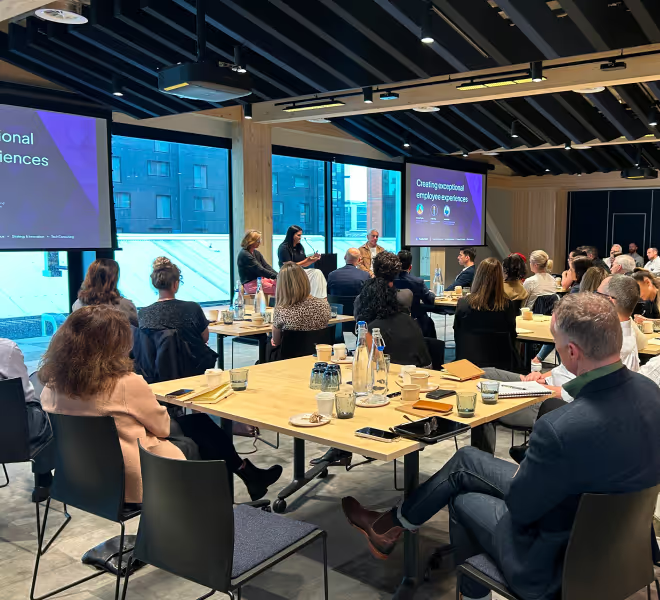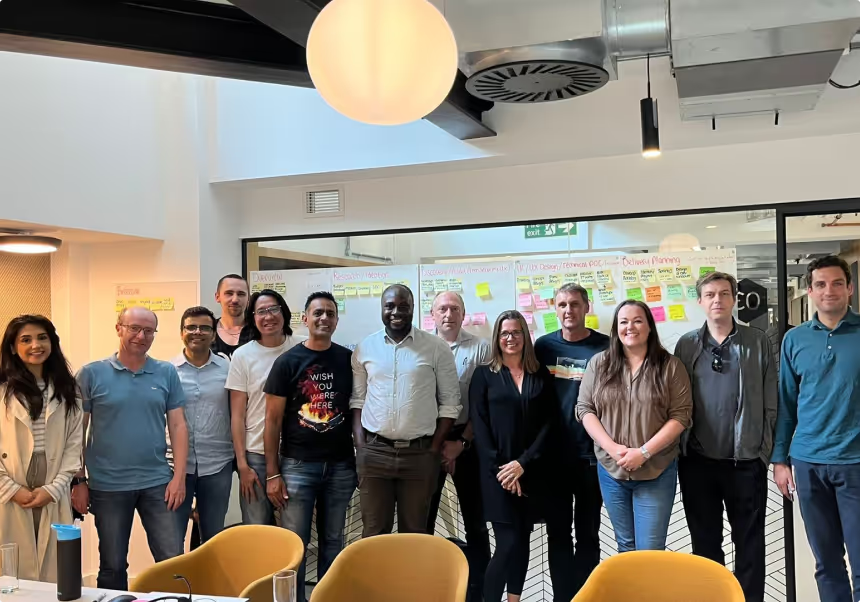How can you turn customer insights into real value for your business? At Purple Shirt we’ve spent over a decade helping organisations develop solutions that respond to insights identified from customer research. Drawing on this experience, we’ve outlined the critical mindsets, approaches and considerations necessary for your business to effectively derisk how you respond to the opportunities you have identified.
#1: Fall in love with opportunities, not ideas
We all get excited when we uncover opportunities, and many of us can’t help ourselves but jump straight into solutions. However, falling in love with an idea too early can cloud judgement and inhibit exploration of other potentially better solutions. Instead, fall in love with the opportunity itself. Focus on understanding the nuances of the problem, and remain open to many ideas before committing to one prematurely.
#2: Architect a cross functional response
Cross-functional collaboration is another key element in effectively responding to opportunities. Involving stakeholders from different parts of the organisation ensures that ideas are well-rounded, technically feasible, and aligned with broader business objectives. It also enables faster iteration and problem-solving as diverse skill sets come together to create a holistic response.
#3: Ensure your response creates value on dimensions that drive customer choice
To effectively respond to opportunities, ideas must align with the key dimensions driving customer choice. Rather than making assumptions, teams should focus on uncovering which dimensions are most influential in customer decisions and ensure that new ideas enhance performance in those areas. Aligning ideas with the drivers of choice helps ensure that solutions resonate with customers, increasing the likelihood of their adoption.
#4: Manage internal bias
When responding to an opportunity, it is critical to be aware of the risks associated with organisational and personal biases. These biases can lead to premature solutions or an over-attachment to ideas without fully considering alternative approaches. To mitigate these risks, it is essential to adopt a structured ideation process that allows for diverse perspectives and encourages creative problem-solving. A structured process not only ensures that ideas are rigorously assessed, but also prevents teams from becoming overly invested in the first "right" idea.
#5: Test your most critical assumptions
When responding to an opportunity, it is essential to focus on testing the most critical assumptions first. These are the assumptions that, if incorrect, would significantly impact the success of the initiative. By prioritising these high-impact assumptions, teams can ensure that solutions are grounded in real member needs and behaviours rather than speculation. This approach aligns with lean methodologies, where early validation helps avoid investing in the wrong solution. Testing critical assumptions iteratively allows teams to refine the experience and make evidence-based decisions, ultimately reducing risk and increasing the likelihood of success.
#6 Co-design with customers
It’s important to test all initiatives with customers, ensuring that solutions are grounded in real-world needs. Testing should be iterative, allowing teams to learn and adapt as they go. Additionally, understanding what drives customer engagement is critical to determining which initiatives will be successful.
#7: Develop a culture of experimentation
Developing a culture of experimentation is crucial to successful opportunity response. In this environment, failure should be viewed as a learning opportunity rather than a setback. By adopting lean start-up methodologies, teams can test ideas quickly, with minimal investment, and iterate based on real-world feedback. This approach fosters innovation and reduces the risks of long-term investment in solutions that may not meet member needs.






